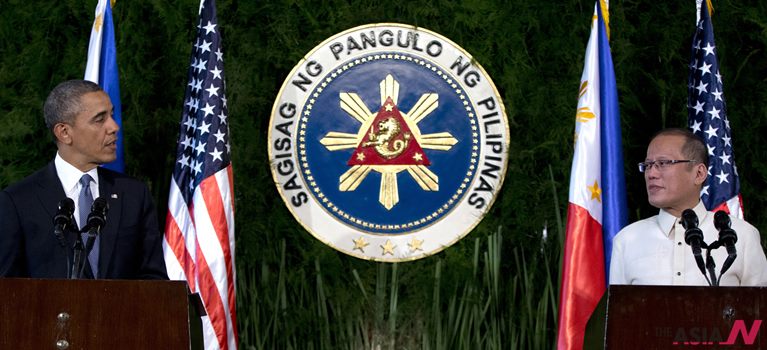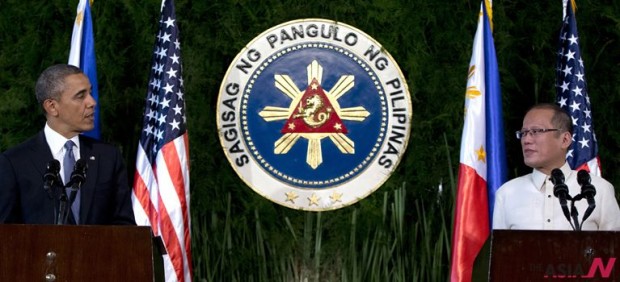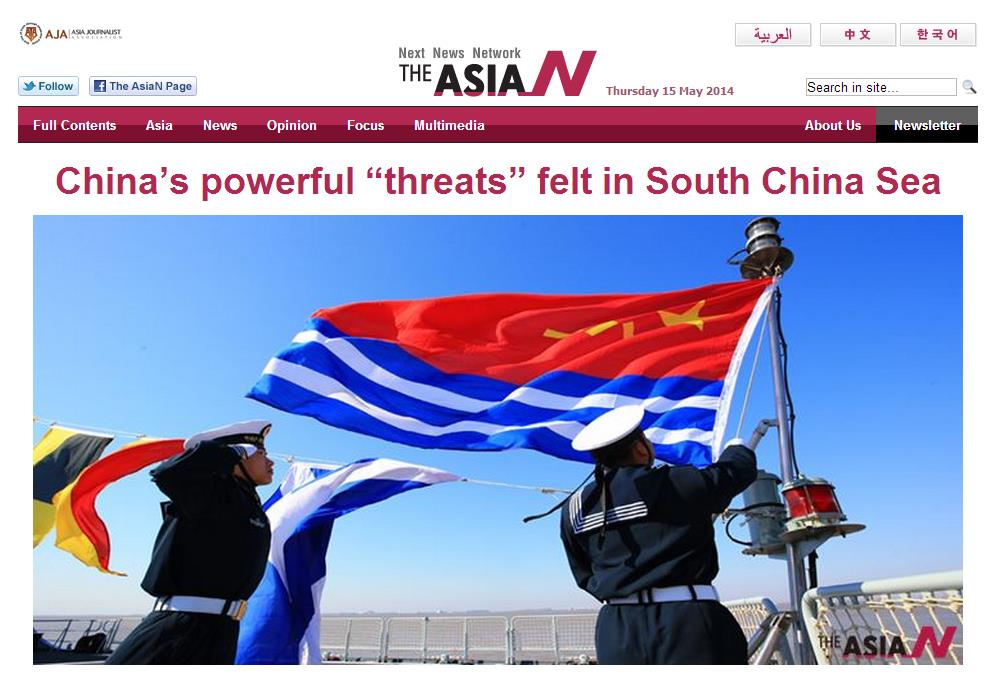
China’s powerful “threats” felt in South China Sea (2)
The statement issued by the ASEAN leaders said that “The Asian bloc is set to lend its full support to a peaceful resolution through dialogue and in full respect of democratic principles and rule of law.” This mentions only broadly the principles in resolving regional issues.
This might be interpreted to mean that Thai’s internal issues should be solved in this manner. However, the statement was all the more conspicuous in not mentioning China or Vietnam clearly in the ongoing conflict. This could be construed that ASEAN leaders do not want to be seen “uncooperative” towards China. An editorial of the Nation, May 13, only mentioned Thai’s failure in representing in the summit.

An English-version article by the People’s daily, May 13, titled ‘Philippines’ tough stance can only end in embarrassment,’ said that “Philippine’s stance was not taken on a whim : their confidence to challenge China stems from the belief that they have the protection and support of the United States.”
The People’s Daily argued that : “the Philippines has been blinded by its reliance on the US. It fails to see that the US is trying to protect its interests in the South China Sea, which includes the overall stability of the area. The US has tried everything it can think of to constrain China, while avoiding direct conflict. The US needs the Philippines to be its ally, but at the same time it attaches great importance to establishing a new-type great power relationship with China.” This implies that China regards the Philippines as a proxy for the US.
After this, the daily carried a “warning” to the Philippines : “China takes an unwavering stand on protecting its territory and sovereignty, and has no fear of provocation from any country. On the incident of the detained Chinese fishing boat, the Chinese coast guard arrived promptly on the scene, and China resolved the issue through diplomatic channels, requiring the Philippine side to release the crew and the boat and give a reasonable explanation. After the Huangyan Island incident, China implemented regular naval patrols around the island and put an end to Filippino harassment of Chinese boats in the area. Making the same mistake again will do no good to the Philippines.”
China demands ASEAN’s neutrality in South China Sea disputes
In the meantime, one editorial of the Global Times, on May 13, clearly expressed China’s position on the maritime conflict. It editorialized that : “the statement by ASEAN (The Nay Pyi Taw Declaration) directly commented on the South China Sea. It is unprecedented. The South China Sea issue is between China and individual ASEAN countries and should be dealt with in a bilateral approach. This is the firm stance of China. The Philippines and Vietnam have always wanted to woo ASEAN into this mud. It may work to some extent, but it cannot change the neutral stance of ASEAN.”
The editorial argued that “the Philippines and Vietnam apparently have imposed pressure on ASEAN to make it break its silence. But the Declaration has kept the bottom line that it didn’t directly mention China, the Philippines and Vietnam or the collision between China and Vietnam over a deep-water oil rig in the vicinity of the Xisha Islands.”
While the article underlined the need for ASEAN countries to cooperate with China, it criticized the Philippines and Vietnam. It said that “China does not adhere to aggressive policies and its restraint in dealing with territorial disputes has been clear to all. On the contrary, the overbearing behavior of the Philippines and Vietnam has been striking.”
Could this dispute be solved peacefully?
All over the world, there exit lots of territorial and maritime disputes. It is quite rare that territorial disputes can be solved in a peaceful manner. Sometimes, when parties concerned agree to accept rulings handed down by the International Court of Justice, then there shall be an end to the dispute.
However, as we have already seen in the Palestine issue, which has lasted for decades, and also in some of Northeast Asian island disputes, it is really hard to solve them in a peaceful manner. In this regard, if the territorial disputes cannot be solved peacefully, then maintaining the status quo can also be one of the solutions.
Sometimes cooperation in developing natural resources can also be a solution. Very frequently, territorial issues are directly linked to national emotion of a people. Therefore, it remains to be seen how this dispute will fan out in the future. The important thing is to stabilize the disputed region without letting it to flare up in a hot clash between parties.
As China rises as a G2 power and started to be increasingly assertive, peaceful resolution of the maritime disputes may depend on how China handles this kind of clashes.




